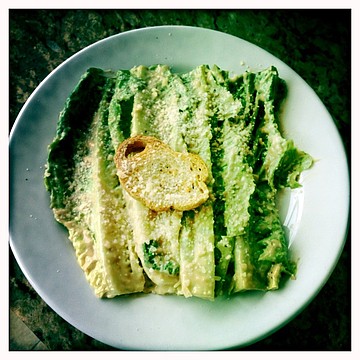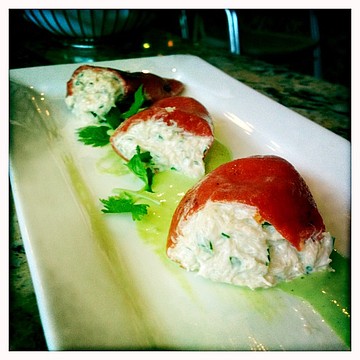 Facebook
Facebook
 X
X
 Instagram
Instagram
 TikTok
TikTok
 Youtube
Youtube

Less than ten years ago, Tijuana was a cultural mecca for the salty, surf-inspired natives of San Diego. A gateway to the Baja Peninsula touting cheap drinks and cheaper thrills, promising an unforgettable experience with at least two women, two bottles of tequila, maybe even a donkey.
The best part was the location: just 10 minutes from the tiresome, urban-chic birdcage that had become San Diego’s Gaslamp district.
Then 2008 happened. The drug cartels started running the city. (Not that this wasn’t the case before, but now it was painfully visible). People started losing their heads. Literally. Stories of mass murder and decapitation took the U.S. media by storm, filling our nightmares with brutal images of red-splattered body bags.
Not that we weren’t used to relentless carnage by now (Vietnam, Iraq), but this time it was too close for comfort. This was our own backyard.
So we did the logical thing: we stopped playing outside. Hell-bent journeys to T.J. became fewer and far between, if at all. We turned our back to cheap drinks and cheaper thrills. It turns out very few Americans are willing to risk their lives to see cash-starved women perform fellatio on a donkey.
Now it’s 2012. September 6, to be exact. I’m sitting outside my apartment, taking advantage of the coastal breeze with the latest copy of Food & Wine. Reading an article on the alleged renaissance taking place in Tijuana: the decreases in crime, the increases in investment and food-related tourism. The article makes it sound as if things have finally started to turn around, and that food is playing a central role in this transformation. Keep in mind this is Tijuana, not Oaxaca. A town that, not too long ago, was butchering more human than pig.
So I called my friend Dave and asked if he was hungry. If he would like to join me for an authentic Mexican dinner for less than twenty bucks.
Dave said yes, so we piled into my ’92 Camry and made a beeline for the international border. Within twenty minutes we were on the other side, greeted by an overfed cab driver with a very polished American accent.
We directed him to the only place we knew – Calle Revolución – hoping to score some cheap eats before the sun went down. (And maybe one of those cheap thrills, for old time’s sake).
We cruised Revolución for the better part of an hour, browsing tequila shops and hustling old women for Oaxacan-style serving bowls, meditating on how radically different the atmosphere was from the last time we were there.
The little tiendas still sold the same luchador masks and wooden Pinocchio dolls, and the elevator pitch of club promoters was as shameless as ever. The only difference was their lack of clientele and the subtle tone of desperation in their voices. (From what I could tell, we were the only white people in Tijuana that day.)
As dusk settled on the urban landscape, we made our way to the fabled Caesar’s restaurant of salad bar fame. According to legend, an Italian immigrant named Caesar Cardini created the aptly named salad back in 1924. By accident.
It was a particularly busy Fourth of July afternoon, and Cardini’s kitchen supplies were exhausted. The customers, however, were not, and continued to line up out the door for a taste of his Baja-Mediterranean specialties. So Cardini did what any great chef would do. He improvised, tossing a salad with the few ingredients he still had in stock: Romaine lettuce, eggs, garlic, Worcestershire sauce and some Parmesan. It must have been a success, because it caught like wildfire and has found its way onto the menu of almost every casual restaurant in the United States.

So I ordered the Caesar salad. The waiter returned momentarily with an entire cart of ingredients and utensils – not a Caesar salad. He smiled, gingerly, and for a second I thought there was something wrong with the poor man. I soon realized I was the ignorant one here, watching in awe as Manuel whipped the dressing tableside with practiced precision. (I’m not generalizing with names here. That’s what his nametag said). First the garlic, then the seasonings, followed by a steady stream of olive oil emulsified with egg yolk.
By the time he was finished, I had already downed my second margarita. But the salad was beautiful and unlike anything I’ve ever tasted. I can say with confidence, now, that the “other” type of Caesar – the type that comes in a bottle featuring Paul Newman’s rugged face – is nowhere near where it should be.

After the salad we were served a handful of the restaurant’s Baja-Med specialties served antojito (small-plate) style, including marinated strips of lengua (beef tongue) and crab-stuffed piquillo peppers with cilantro cream (left). Five-star cuisine in my opinion, and for less than five bucks a pop.
The rest of the evening went smoothly. Nobody got mugged or murdered, and the only molesting was from street-side shopkeepers desperate to hawk their wares. (Apparently their tourist clientele is considerably thinner than it used to be.)
There we were, two stupid Americans stumbling down Calle Revolución, living the dream that, according to mass media, no longer existed.


Less than ten years ago, Tijuana was a cultural mecca for the salty, surf-inspired natives of San Diego. A gateway to the Baja Peninsula touting cheap drinks and cheaper thrills, promising an unforgettable experience with at least two women, two bottles of tequila, maybe even a donkey.
The best part was the location: just 10 minutes from the tiresome, urban-chic birdcage that had become San Diego’s Gaslamp district.
Then 2008 happened. The drug cartels started running the city. (Not that this wasn’t the case before, but now it was painfully visible). People started losing their heads. Literally. Stories of mass murder and decapitation took the U.S. media by storm, filling our nightmares with brutal images of red-splattered body bags.
Not that we weren’t used to relentless carnage by now (Vietnam, Iraq), but this time it was too close for comfort. This was our own backyard.
So we did the logical thing: we stopped playing outside. Hell-bent journeys to T.J. became fewer and far between, if at all. We turned our back to cheap drinks and cheaper thrills. It turns out very few Americans are willing to risk their lives to see cash-starved women perform fellatio on a donkey.
Now it’s 2012. September 6, to be exact. I’m sitting outside my apartment, taking advantage of the coastal breeze with the latest copy of Food & Wine. Reading an article on the alleged renaissance taking place in Tijuana: the decreases in crime, the increases in investment and food-related tourism. The article makes it sound as if things have finally started to turn around, and that food is playing a central role in this transformation. Keep in mind this is Tijuana, not Oaxaca. A town that, not too long ago, was butchering more human than pig.
So I called my friend Dave and asked if he was hungry. If he would like to join me for an authentic Mexican dinner for less than twenty bucks.
Dave said yes, so we piled into my ’92 Camry and made a beeline for the international border. Within twenty minutes we were on the other side, greeted by an overfed cab driver with a very polished American accent.
We directed him to the only place we knew – Calle Revolución – hoping to score some cheap eats before the sun went down. (And maybe one of those cheap thrills, for old time’s sake).
We cruised Revolución for the better part of an hour, browsing tequila shops and hustling old women for Oaxacan-style serving bowls, meditating on how radically different the atmosphere was from the last time we were there.
The little tiendas still sold the same luchador masks and wooden Pinocchio dolls, and the elevator pitch of club promoters was as shameless as ever. The only difference was their lack of clientele and the subtle tone of desperation in their voices. (From what I could tell, we were the only white people in Tijuana that day.)
As dusk settled on the urban landscape, we made our way to the fabled Caesar’s restaurant of salad bar fame. According to legend, an Italian immigrant named Caesar Cardini created the aptly named salad back in 1924. By accident.
It was a particularly busy Fourth of July afternoon, and Cardini’s kitchen supplies were exhausted. The customers, however, were not, and continued to line up out the door for a taste of his Baja-Mediterranean specialties. So Cardini did what any great chef would do. He improvised, tossing a salad with the few ingredients he still had in stock: Romaine lettuce, eggs, garlic, Worcestershire sauce and some Parmesan. It must have been a success, because it caught like wildfire and has found its way onto the menu of almost every casual restaurant in the United States.

So I ordered the Caesar salad. The waiter returned momentarily with an entire cart of ingredients and utensils – not a Caesar salad. He smiled, gingerly, and for a second I thought there was something wrong with the poor man. I soon realized I was the ignorant one here, watching in awe as Manuel whipped the dressing tableside with practiced precision. (I’m not generalizing with names here. That’s what his nametag said). First the garlic, then the seasonings, followed by a steady stream of olive oil emulsified with egg yolk.
By the time he was finished, I had already downed my second margarita. But the salad was beautiful and unlike anything I’ve ever tasted. I can say with confidence, now, that the “other” type of Caesar – the type that comes in a bottle featuring Paul Newman’s rugged face – is nowhere near where it should be.

After the salad we were served a handful of the restaurant’s Baja-Med specialties served antojito (small-plate) style, including marinated strips of lengua (beef tongue) and crab-stuffed piquillo peppers with cilantro cream (left). Five-star cuisine in my opinion, and for less than five bucks a pop.
The rest of the evening went smoothly. Nobody got mugged or murdered, and the only molesting was from street-side shopkeepers desperate to hawk their wares. (Apparently their tourist clientele is considerably thinner than it used to be.)
There we were, two stupid Americans stumbling down Calle Revolución, living the dream that, according to mass media, no longer existed.
Comments